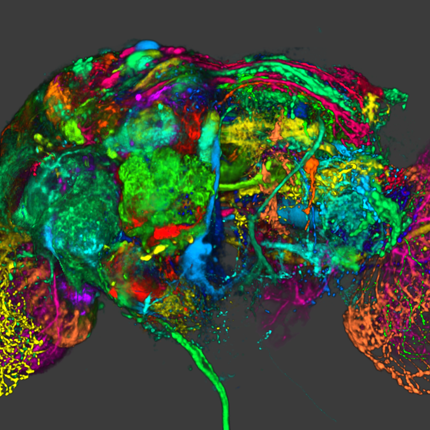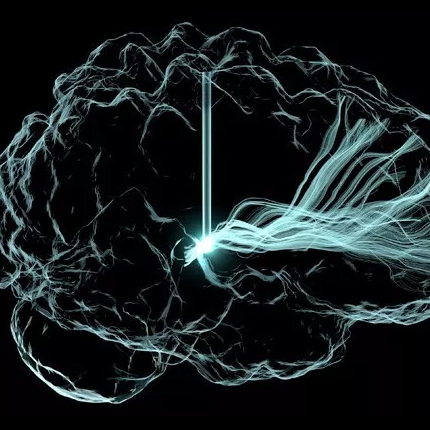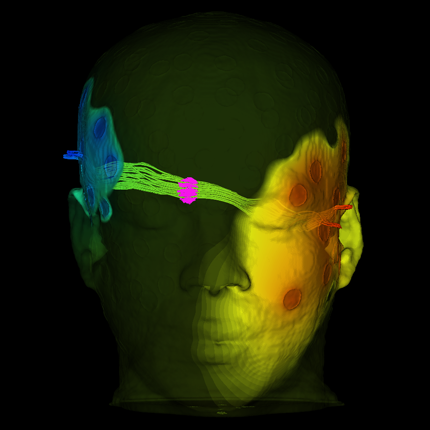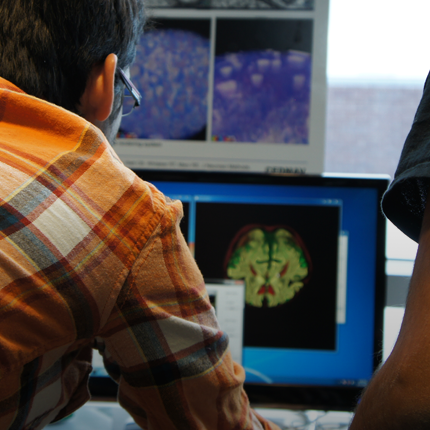Biomedical Computing
Biomedical computing combines the diagnostic and investigative aspects of biology and medical science with the power and problem-solving capabilities of modern computing. Computers are used to accelerate research learning, simulate patient behavior and visualize complex biological models.
Jeff Weiss
Computational Biomechanics
Orly Alter
Computational Biology
Tamara Bidone
Computational Models
Simulations of Biological Systems
Multi-Physics Models of Cancer Cells
Centers and Labs:
- Center for Integrative Biomedical Computing
- Muskuloskeletal Research Laboratory
- Genomic Signal Processing Lab
- Computational Biomechanics Group
Funded Research Projects:
Publications in Biomedical Computing:
 Ablation-induced left atrial mechanical dysfunction recovers in weeks after ablation, J. Dong, E. Kwan, J.A. Bergquist, B.A. Steinberg, D.J. Dosdall, E. DiBella, R.S. MacLeod, T.J. Bunch, R. Ranjan. In Journal of Interventional Cardiac Electrophysiology, Springer, 2024. Background |
  Grand Challenges at the Interface of Engineering and Medicine S. Subramaniam, M. Miller, several co-authors, Chris R. Johnson, et al.. In IEEE Open Journal of Engineering in Medicine and Biology, Vol. 5, IEEE, pp. 1--13. 2024. DOI: 10.1109/OJEMB.2024.3351717 Over the past two decades Biomedical Engineering has emerged as a major discipline that bridges societal needs of human health care with the development of novel technologies. Every medical institution is now equipped at varying degrees of sophistication with the ability to monitor human health in both non-invasive and invasive modes. The multiple scales at which human physiology can be interrogated provide a profound perspective on health and disease. We are at the nexus of creating “avatars” (herein defined as an extension of “digital twins”) of human patho/physiology to serve as paradigms for interrogation and potential intervention. Motivated by the emergence of these new capabilities, the IEEE Engineering in Medicine and Biology Society, the Departments of Biomedical Engineering at Johns Hopkins University and Bioengineering at University of California at San Diego sponsored an interdisciplinary workshop to define the grand challenges that face biomedical engineering and the mechanisms to address these challenges. The Workshop identified five grand challenges with cross-cutting themes and provided a roadmap for new technologies, identified new training needs, and defined the types of interdisciplinary teams needed for addressing these challenges. The themes presented in this paper include: 1) accumedicine through creation of avatars of cells, tissues, organs and whole human; 2) development of smart and responsive devices for human function augmentation; 3) exocortical technologies to understand brain function and treat neuropathologies; 4) the development of approaches to harness the human immune system for health and wellness; and 5) new strategies to engineer genomes and cells. |
  Uncertainty quantification of the effect of cardiac position variability in the inverse problem of electrocardiographic imaging J. A. Bergquist, B. Zenger, L. Rupp, A. Busatto, J. D. Tate, D. H. Brooks, A. Narayan, R. MacLeod. In Journal of Physiological Measurement, IOP Science, 2023. DOI: 10.1088/1361-6579/acfc32 Objective:
Electrocardiographic imaging (ECGI) is a functional imaging modality that consists of two related problems, the forward problem of reconstructing body surface electrical signals given cardiac bioelectric activity, and the inverse problem of reconstructing cardiac bioelectric activity given measured body surface signals. ECGI relies on a model for how the heart generates bioelectric signals which is subject to variability in inputs. The study of how uncertainty in model inputs affects the model output is known as uncertainty quantification (UQ). This study establishes develops, and characterizes the application of UQ to ECGI.

Approach:
We establish two formulations for applying UQ to ECGI: a polynomial chaos expansion (PCE) based parametric UQ formulation (PCE-UQ formulation), and a novel UQ-aware inverse formulation which leverages our previously established ``joint-inverse" formulation (UQ joint-inverse formulation). We apply these to evaluate the effect of uncertainty in the heart position on the ECGI solutions across a range of ECGI datasets.

Main Results:
We demonstrated the ability of our UQ-ECGI formulations to characterize the effect of parameter uncertainty on the ECGI inverse problem. We found that while the PCE-UQ inverse solution provided more complex outputs such as sensitivities and standard deviation, the UQ joint-inverse solution provided a more interpretable output in the form of a single ECGI solution. We find that between these two methods we are able to assess a wide range of effects that heart position variability has on the ECGI solution.

Significance:
This study, for the first time, characterizes in detail the application of UQ to the ECGI inverse problem. We demonstrated how UQ can provide insight into the behavior of ECGI using variability in cardiac position as a test case. This study lays the groundwork for future development of UQ-ECGI studies, as well as future development of ECGI formulations which are robust to input parameter variability. |
  Computational model of integrin adhesion elongation under an actin fiber S. Campbell, M. C. Mendoza, A. Rammohan, M. E. McKenzie, T. C. Bidone. In PLOS Computatonal Biology, Vol. 19, No. 7, Public Library of Science, pp. 1-19. 7, 2023. DOI: 10.1371/journal.pcbi.1011237 Cells create physical connections with the extracellular environment through adhesions. Nascent adhesions form at the leading edge of migrating cells and either undergo cycles of disassembly and reassembly, or elongate and stabilize at the end of actin fibers. How adhesions assemble has been addressed in several studies, but the exact role of actin fibers in the elongation and stabilization of nascent adhesions remains largely elusive. To address this question, here we extended our computational model of adhesion assembly by incorporating an actin fiber that locally promotes integrin activation. The model revealed that an actin fiber promotes adhesion stabilization and elongation. Actomyosin contractility from the fiber also promotes adhesion stabilization and elongation, by strengthening integrin-ligand interactions, but only up to a force threshold. Above this force threshold, most integrin-ligand bonds fail, and the adhesion disassembles. In the absence of contraction, actin fibers still support adhesions stabilization. Collectively, our results provide a picture in which myosin activity is dispensable for adhesion stabilization and elongation under an actin fiber, offering a framework for interpreting several previous experimental observations. |
  Editorial: Image-based computational approaches for personalized cardiovascular medicine: improving clinical applicability and reliability through medical imaging and experimental data S. Pirola, A. Arzani, C. Chiastra, F. Sturla. In Frontiers in Medical Technology, Vol. 5, 2023. DOI: 10.3389/fmedt.2023.1222837 |
 Halide Code Generation Framework in Phylanx, R. Tohid, S. Shirzad, C. Taylor, S.A. Sakin, K.E. Isaacs, H. Kaiser. In Euro-Par 2022: Parallel Processing Workshops, Springer Nature Switzerland, pp. 32--45. 2023. ISBN: 978-3-031-31209-0 DOI: 10.1007/978-3-031-31209-0_3 Separating algorithms from their computation schedule has become a de facto solution to tackle the challenges of developing high performance code on modern heterogeneous architectures. Common approaches include Domain-specific languages (DSLs) which provide familiar APIs to domain experts, code generation frameworks that automate the generation of fast and portable code, and runtime systems that manage threads for concurrency and parallelism. In this paper, we present the Halide code generation framework for Phylanx distributed array processing platform. This extension enables compile-time optimization of Phylanx primitives for target architectures. To accomplish this, (1) we implemented new Phylanx primitives using Halide, and (2) partially exported Halide's thread pool API to carry out parallelism on HPX (Phylanx's runtime) threads. (3) showcased HPX performance analysis tools made available to Halide applications. The evaluation of the work has been done in two steps. First, we compare the performance of Halide applications running on its native runtime with that of the new HPX backend to verify there is no cost associated with using HPX threads. Next, we compare performances of a number of original implementations of Phylanx primitives against the new ones in Halide to verify performance and portability benefits of Halide in the context of Phylanx. |
  Protein-metabolite interactomics of carbohydrate metabolism reveal regulation of lactate dehydrogenase K. G. Hicks, A. A. Cluntun, H. L. Schubert, S. R. Hackett, J. A. Berg, P. G. Leonard, M. A. Ajalla Aleixo, Y. Zhou, A. J. Bott, S. R. Salvatore, F. Chang, A. Blevins, P. Barta, S. Tilley, A. Leifer, A. Guzman, A. Arok, S. Fogarty, J. M. Winter, H. Ahn, K. N. Allen, S. Block, I. A. Cardoso, J. Ding, I. Dreveny, C. Gasper, Q. Ho, A. Matsuura, M. J. Palladino, S. Prajapati, P. Sun, K. Tittmann, D. R. Tolan, J. Unterlass, A. P. VanDemark, M. G. Vander Heiden, B. A. Webb, C. Yun, P. Zhap, B. Wang, F. J. Schopfer, C. P. Hill, M. C. Nonato, F. L. Muller, J. E. Cox, J. Rutter. In Science, Vol. 379, No. 6636, pp. 996-1003. 2023. DOI: 10.1126/science.abm3452 Metabolic networks are interconnected and influence diverse cellular processes. The protein-metabolite interactions that mediate these networks are frequently low affinity and challenging to systematically discover. We developed mass spectrometry integrated with equilibrium dialysis for the discovery of allostery systematically (MIDAS) to identify such interactions. Analysis of 33 enzymes from human carbohydrate metabolism identified 830 protein-metabolite interactions, including known regulators, substrates, and products as well as previously unreported interactions. We functionally validated a subset of interactions, including the isoform-specific inhibition of lactate dehydrogenase by long-chain acyl–coenzyme A. Cell treatment with fatty acids caused a loss of pyruvate-lactate interconversion dependent on lactate dehydrogenase isoform expression. These protein-metabolite interactions may contribute to the dynamic, tissue-specific metabolic flexibility that enables growth and survival in an ever-changing nutrient environment. Understanding how metabolic state influences cellular processes requires systematic analysis of low-affinity interactions of metabolites with proteins. Hicks et al. describe a method called MIDAS (mass spectrometry integrated with equilibrium dialysis for the discovery of allostery systematically), which allowed them to probe such interactions for 33 enzymes of human carbohydrate metabolism and more than 400 metabolites. The authors detected many known and many new interactions, including regulation of lactate dehydrogenase by ATP and long-chain acyl coenzyme A, which may help to explain known physiological relations between fat and carbohydrate metabolism in different tissues. —LBR A mass spectrometry and dialysis method detects metabolite-protein interactions that help to control physiology. |
  Contribution of atrial myofiber architecture to atrial fibrillation R. Kamali, E. Kwan, M. Regouski, T.J. Bunch, D.J. Dosdall, E. Hsu, R. S. Macleod, I. Polejaeva, R. Ranjan. In PLOS ONE, Vol. 18, No. 1, Public Library of Science, pp. 1--16. Jan, 2023. DOI: 10.1371/journal.pone.0279974 Background Methods
Transgenic goats with cardiac-specific overexpression of constitutively active TGF-β1 (n = 14) underwent AF inducibility testing by rapid pacing in the left atrium. We chose a minimum of 10 minutes of sustained AF as a cut-off for AF inducibility. Explanted hearts underwent DTI to determine the fiber direction. Using tractography data, we clustered, visualized, and quantified the fiber helix angles in 8 different regions of the left atrial wall using two reference vectors defined based on anatomical landmarks. Results
Sustained AF was induced in 7 out of 14 goats. The mean helix fiber angles in 7 out of 8 selected regions were statistically different (P-Value < 0.05) in the AF inducible group. The average fractional anisotropy (FA) and the mean diffusivity (MD) were similar in the two groups with FA of 0.32±0.08 and MD of 8.54±1.72 mm2/s in the non-inducible group and FA of 0.31±0.05 (P-value = 0.90) and MD of 8.68±1.60 mm2/s (P-value = 0.88) in the inducible group. Conclusions
DTI based fiber direction shows significant variability across subjects with a significant difference between animals that are AF inducible versus animals that are not inducible. Fiber direction might be contributing to the initiation and sustaining of AF, and its role needs to be investigated further. |







